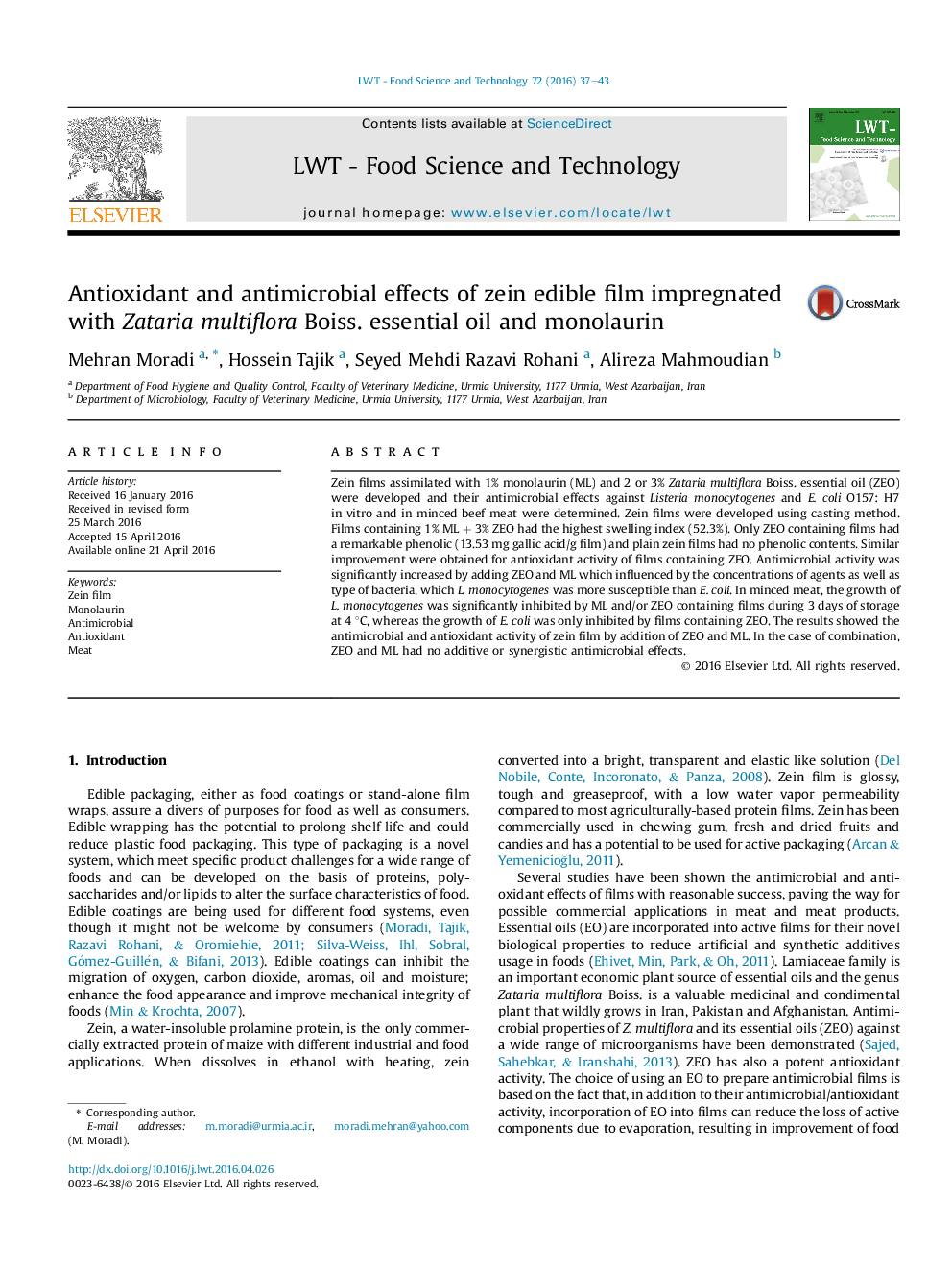| Article ID | Journal | Published Year | Pages | File Type |
|---|---|---|---|---|
| 4563255 | LWT - Food Science and Technology | 2016 | 7 Pages |
•Zataria multiflora Boiss. essential oil (ZEO) and monolaurin (ML) are promising active compounds.•Antioxidant/antimicrobial zein active packaging were developed using ZEO and ML.•Antioxidant/antimicrobial activity were found when ZEO and ML were added, which was dose dependent.•ZEO and ML did not have an additive or synergistic antimicrobial effect when incorporate into zein film.
Zein films assimilated with 1% monolaurin (ML) and 2 or 3% Zataria multiflora Boiss. essential oil (ZEO) were developed and their antimicrobial effects against Listeria monocytogenes and E. coli O157: H7 in vitro and in minced beef meat were determined. Zein films were developed using casting method. Films containing 1% ML + 3% ZEO had the highest swelling index (52.3%). Only ZEO containing films had a remarkable phenolic (13.53 mg gallic acid/g film) and plain zein films had no phenolic contents. Similar improvement were obtained for antioxidant activity of films containing ZEO. Antimicrobial activity was significantly increased by adding ZEO and ML which influenced by the concentrations of agents as well as type of bacteria, which L. monocytogenes was more susceptible than E. coli. In minced meat, the growth of L. monocytogenes was significantly inhibited by ML and/or ZEO containing films during 3 days of storage at 4 °C, whereas the growth of E. coli was only inhibited by films containing ZEO. The results showed the antimicrobial and antioxidant activity of zein film by addition of ZEO and ML. In the case of combination, ZEO and ML had no additive or synergistic antimicrobial effects.
